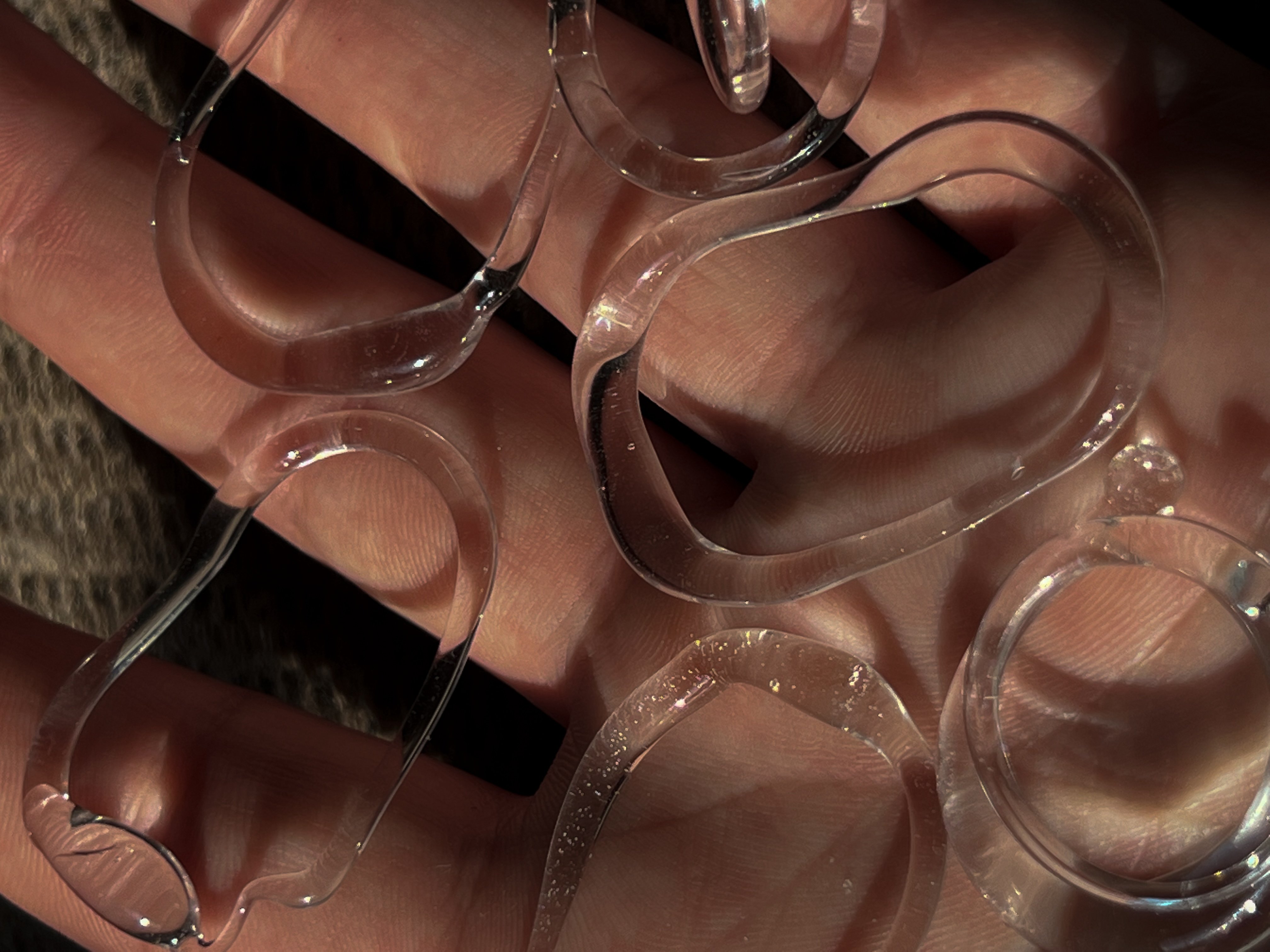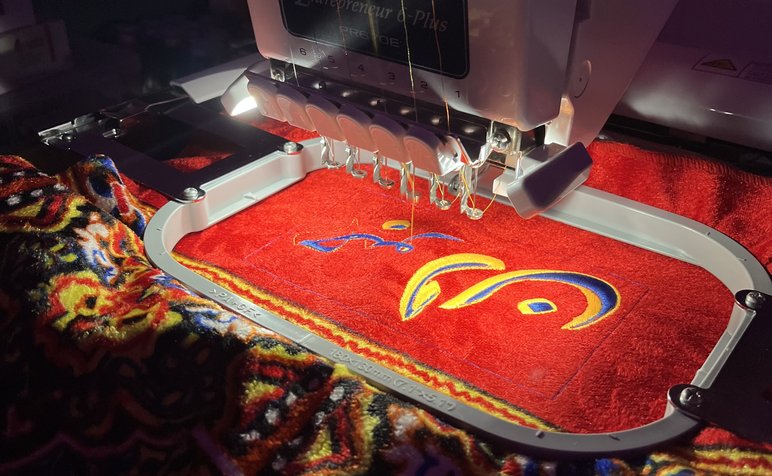
I am sitting in Pozzallo, Sicily, the town from which my Nonni immigrated, in a search for something sweeter. I reflect on this as I think about why I am here: to see the place where my family is from, to appreciate the distance our story has covered, and to learn. Not in a ‘finding myself’ sort of way, but more ‘looking for something’. My work often references the relationship between biology/genetics and inheritance/heritage and, naturally, elements of my own family’s story will always inform my work.
Specifically, I came to Sicily to learn about my family and to engage with my heritage in a way that I have not been able to before. However, I came to Italy as part of my research into traditional (Italian) craft processes and their applications within a contemporary design context. This was my independent research topic that gained me my Fellowship from the International Specialised Skills Institute (ISSI) and the Italian/Australian Foundation. My research is anchored in the materialities and applications of glass and leather and my exploration into these materials led me to the cities of Murano (Venice) and Florence, respectively.
It has taken me a long time to learn how I learn. I learn by doing, and enjoy teaching myself how to do things.This aspect of myself has made my fellowship research both meaningful and terrifying, because I must learn from others.
My time in Florence allowed me to learn the basics of leatherwork. My teacher, Roberta, was somebody that I both admired and related to. She did not learn her craft through the education system, but was taught first by her father and then by herself. She was humble and she was a master of her craft. What made this experience more special was the nature of our lessons; the barriers of communication that existed between us; and how we broke them down through making.
Roberta only spoke Italian, and although my Italian is decent, there were definitely some challenges when it came to communication. However, these limitations seemed to dissolve as we began the lessons. We found different ways to say things. We used gestures on the leather, broken bits of language and rough scribbles in order to communicate. We were able to have our own jovial fragmented conversations while also sharing knowledge with each other. Roberta revealed that there are not many people of younger generations interested in learning traditional leather work, and that she fears the gap between the older generations of leather workers and the new is getting larger, resulting in fewer people teaching and learning the craft. She appreciated my desire to learn and ambition to help facilitate this knowledge.
Roberta affirmed for me that you do not necessarily need formal training in order to hone your craft, you simply need to connect with somebody who is willing to pass on the knowledge and continue the story. She taught me that traditional learning is not the same as learning tradition, and she emphasised the idea that craft is a way to not only connect with yourself, but also connect with others.
Following my experience in Florence, I made my way to Murano (Venice) in order to begin my investigation into working with glass. For this portion of my research, I was specifically investigating glass lampworking techniques. Annette Otterdahl was my instructor. I felt an immediate affinity with Annette, and I learnt that she was not born in Italy, but had emigrated from Denmark in her early twenties in order to pursue her passion for glass in Murano.
Like me, she needed to travel somewhere else in order to learn a craft that was otherwise inaccessible to her. Annette’s appreciation for the materiality of glass made learning from her truly special. She truly knew the material and watching her work showed her dedication to the craft. Annette’s method of learning was parallel to my own; in order to learn, you must simply do and create.
One of Annette’s first observations was that I was not afraid of the flame and heat of the torch. Our similar burn marks across our hands and arms told of our shared trials and errors. While working, our conversations turned from discussing lampworking techniques, to our experiences working within our relative industries. Annette expressed that she always felt that she had to prove herself to her colleagues. She revealed her feelings of imposter syndrome, something that I have also struggled with.
Learning from Annette helped me learn about myself in ways I did not expect. I learned to trust myself and my process more. Her calm and measured approach to her practice helped me realise that I don’t need to be doing as much as possible all the time; that I must be respectful and sensitive to my limitations. She also helped highlight a dynamic that I have been struggling with; that there is a difference between making with purpose, and making for the sake of making.
The glassworking skills I have researched during my fellowship encompass both glassblowing and lampworking. I found that lampworking allows you to slowly and intimately learn the qualities of glass. You are able to work by yourself and at your own pace, as the material reveals its quirks, its potential and its limitations. Glassblowing, on the other hand, is a baptism by fire when it comes to handling glass. You not only have to build your relationship with the material quickly (and under extreme heat), but you also have to build your relationship with the person (or persons) you are working with as a matter of necessity. When working in the hot-shop environment, your communication with the other person(s) that you are working with needs to be impeccable in order to achieve the desired result. You need to know when to direct and when to be directed, how much material to gather, where to position yourself, how much force to apply and how hard to blow; all while being subjected to extreme heat.
What has resulted from my ISSI Fellowship is a sense of purpose in both myself and my craft. From my teachers, I have learnt to trust myself, my ideas and my intuition. I have been able to connect to people from different places through a mutual respect for craft. I have gleaned that learning is a practice in its own right, something that you must engage in with your own intention and own sense of curiosity. Lastly, I have learnt that the passing of knowledge, experiences and techniques is the sharing of our history. It helps us understand each other, our individual contexts, and gives us comfort in the fact that we have contributed something; and that our story continues to the next page.
Bobby Corica, born in Naarm/ Melbourne 1994, lives and works from his Brunswick studio in Naarm / Melbourne. Drawing from his Italian/Australian heritage and a background in biochemistry and molecular biology, Bobby embarked on his silversmithing journey in 2019, honing his craft in the art of chain making.
Guided by a fusion of nostalgia, chaos, and boundless curiosity, Bobby's process is best described as "intuitive," as he delicately responds to the enchanting qualities of precious materials. The culmination of this artistry manifests in highly textured and truly one-of-a-kind pieces that carry a distinctive allure.
The National Gallery of Victoria recently commissioned Bobby for the 2022/2023 Alexander McQueen: Mind, Mythos, Muse. His work has been exhibited as part of NGV Design Week, Oigall Projects, Jam Factory and Craft Victoria. Alongside his online store, his work can be found in design stores both nationally and internationally.
The Italian Australian Foundation and the International Specialised Skills Institute (ISS Institute) have partnered to offer applied research Fellowships to Australians of Italian heritage.
These Fellowships aim to enhance skills and knowledge on an international level, leading to innovative approaches and long-lasting economic and social advantages in Australia. So far, more than 570 Australians have participated Fellowships provided by the ISS Institute. The ISS Institute Fellowship Program promotes entrepreneurship, innovation, collaborative learning, leadership, and the development of communities of practice. Central to the ISS Institutes mission is the belief that international applied research Fellowships bring about positive change and facilitate growth in both individuals and communities.
The Italian Australian Foundation makes grants to funds, institutions and other entities to provide or facilitate educational, cultural and heritage services that advance the appreciation of Italian culture, language, skills and heritage for persons of Italian descent resident in Aust and the broader Australian community.
Image credit: Bobby Corica
This text was commissioned as a part of Craft Contemporary 2023.

